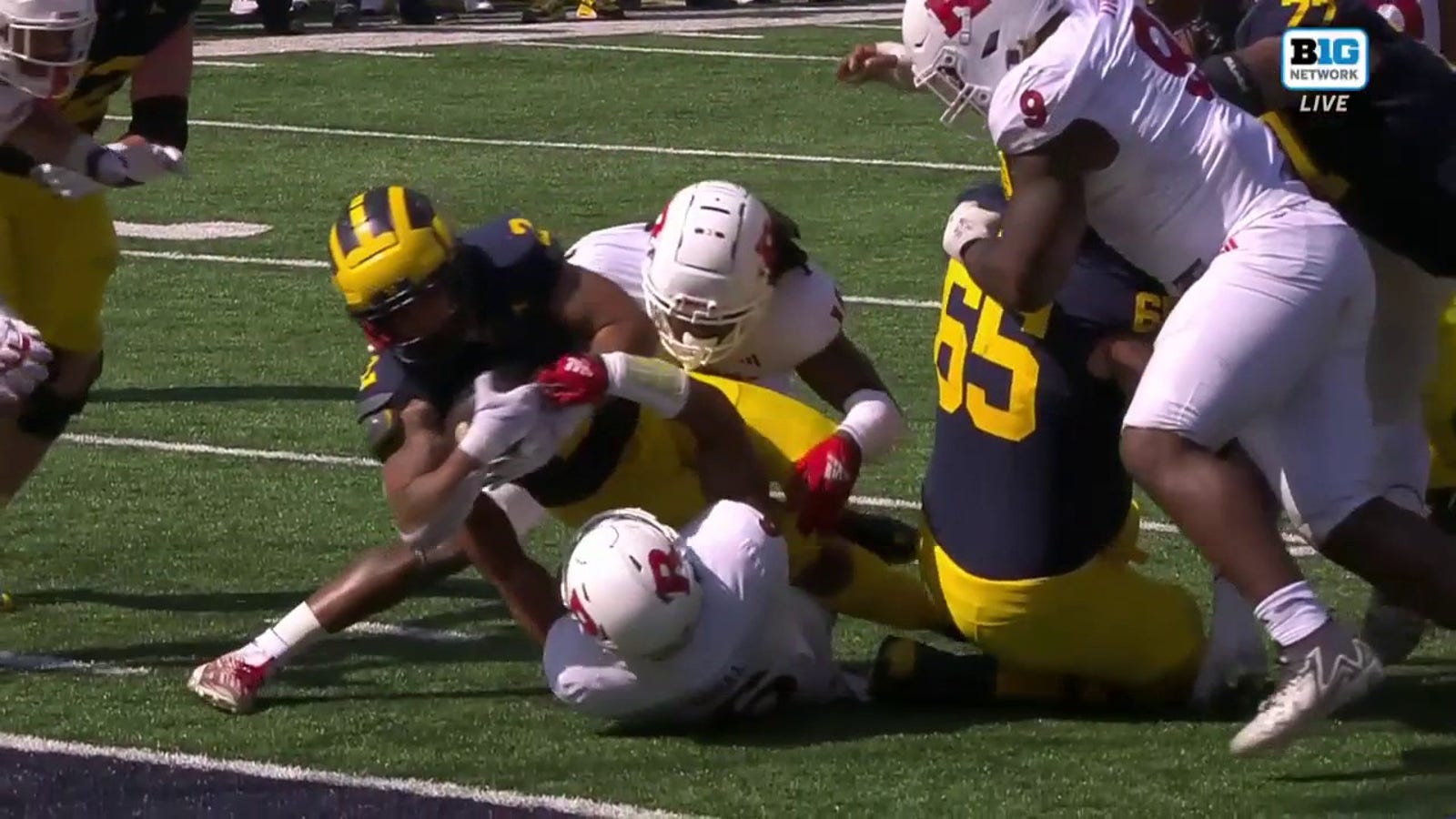
Colston Loveland's decision to play at Michigan has led him to success as a tight end
Colston Loveland was a small-town star in southern Idaho, honing his pass-catching far from the empires of major college football, when he experienced the defining moment halfway through his prep career.
"I was a little bit too big for receiver," Loveland said, "so my junior year I started putting my hand in the dirt and playing more tight end."
His profile only grew from there. Big-time recruiters began flocking to Gooding High School. When he committed to Michigan, he was the Idaho Player of the Year with 10 offers from power conference programs — including Alabama and LSU — as a consensus national top-10 prospect at his position.
Loveland chose the Wolverines for the allure of playing for head coach Jim Harbaugh on a team that’s been to the last two College Football Playoffs. He was struck by the good vibes around the program on his official campus visit. He bonded with assistant coach Grant Newsome, who’s conveniently now in charge of the tight ends.
There was another factor, too, in his decision to play nearly 2,000 miles away from home in a stadium that fits nearly 30 times more people than the population of his hometown.
"Michigan and Iowa, those are the two schools that come to mind when I think of tight ends," the sophomore Loveland said last week. "That was a big reason why I came to the Big Ten."
Georgia, Michigan & Washington headline Joel Klatt's CFB Top 10 | Breaking the Huddle
No conference has a stronger track record of producing the blocker-receiver hybrids. Iowa tied for the most tight end alumni on NFL opening-weekend rosters this year, matching Georgia, Notre Dame and Stanford with five apiece.
The Hawkeyes were never more warranted to the title of "Tight End U" than in 2019 when both T.J. Hockenson and Noah Fant were drafted in the first round. George Kittle (2017) and Sam LaPorta (2023) were also recent high picks produced by the Hawkeyes now in key roles for their pro teams.
Iowa, with five draft picks in the last 10 years and four top-100 selections, leads the Big Ten, Penn State, Michigan and Ohio State each had four tight ends drafted between 2014-2023. Penn State had three top-100 picks, and Michigan and Ohio State had two apiece.
There were 34 tight ends taken over the last two NFL drafts. The Big Ten had the most with nine, followed by the Pac-12 with five.
Over the last 10 drafts, the Big Ten had 28 of the 143 tight ends selected to beat the SEC (26), ACC (20), Pac-12 (17) and Big 12 (eight). Notre Dame had seven.
There were 52 tight ends taken with top-100 picks from 2014-2023, led by the Big Ten with 13. The SEC (10), Pac-12 (eight), ACC (five) and Big 12 (two) followed in line. Notre Dame had four.
Michigan's Blake Corum scores his second touchdown of the day against Rutgers
Yes, Loveland picked the right place. The Wolverines are ranked second in the Associated Press Top 25, after a 31-7 victory over Rutgers on Saturday when Loveland had career highs with five catches for 75 yards.
"He’s really great. Freak athlete," Harbaugh said. "I think that cat’s out of the bag."
Loveland has plenty of company again this fall in the conference.
Erick All (Iowa), Corey Dyches (Maryland), Thomas Fidone II (Nebraska), Max Klare (Purdue), Johnny Langan (Rutgers), Brevyn Spann-Ford (Minnesota) and Cade Stover (Ohio State) all join Loveland as Big Ten tight ends who’ve accounted for more than 15% of their team’s catches, according to Sportradar data. The Hawkeyes lost Luke Lachey to an ankle injury that’s likely season-ending, but true to form they had the capable All, a Michigan transfer, to turn to.
"When you’ve got a true tight end who can block and can run routes really well," Loveland said, "it’s just a pain in the butt for defenses, really."
Most Big Ten teams like to employ "12" or "13" personnel packages to buttress their ground game, which means either one running back and two tight ends or one running back and three tight ends.
The least glamorous of the skill positions and the most glorified of the blocking roles, the path to becoming a tight end typically has a few different origins.
"I was mostly a receiver in high school," Fidone said. "Honestly, I love blocking. Actually it’s fun for me. I do everything I do with a lot of pride."
Said Wisconsin freshman Tucker Ashcraft: "I wasn’t fast enough to be a receiver or anything, so tight end was my job."
As for teammate Hayden Rucci?
"In youth football, I started as O-line. I did a little fullback. So I just decided to combine ’em and play tight end," Rucci said. "I always had good size and good speed, and I was kind of a natural blocker."
Both Ashcraft and Rucci unequivocally said they picked the Badgers because of their history — and the Big Ten’s — of producing pro-caliber tight ends.
Spann-Ford, the only tight end on the conference’s 10-player preseason honor roll, has had a slow start in his sixth year with the Gophers. Another late bloomer at the position whose high school experience didn’t include blocking out of a three-point stance, Spann-Ford has 11 catches for 63 yards in four games. Opposing defenses have been "way more aware of him" this season, coach P.J. Fleck said.
"You don’t see people with eyes in the backfield and letting him slip behind them," Fleck said on Monday after a meeting with Spann-Ford about his performance.."He’s earned the right to gain a lot more attention. What we have to do is continue to get him free."
Reporting by The Associated Press.












